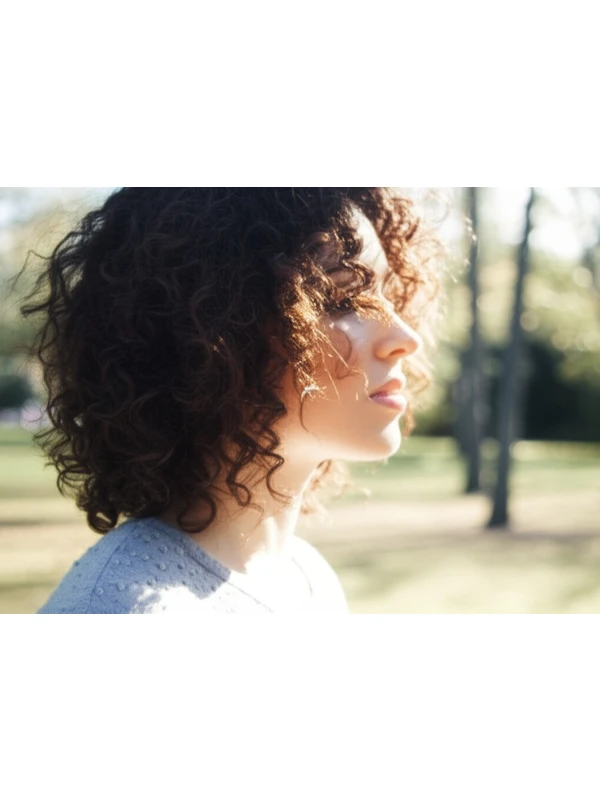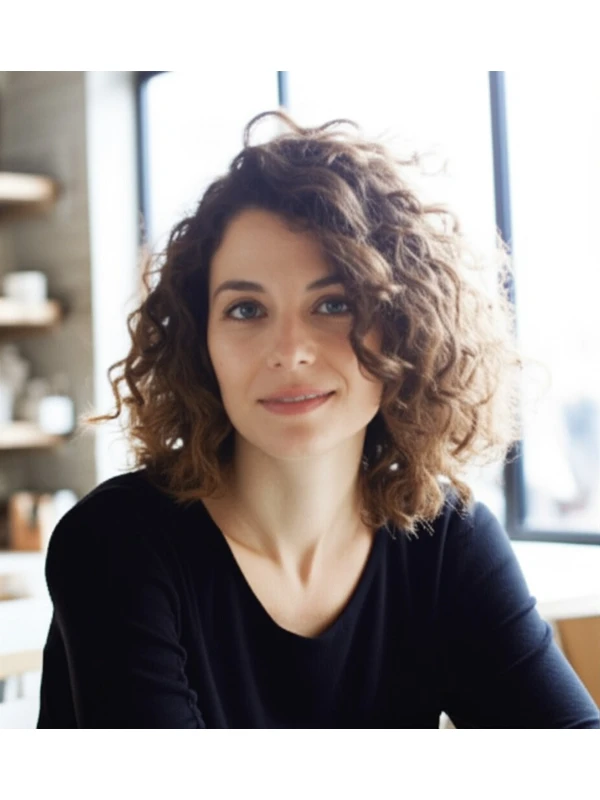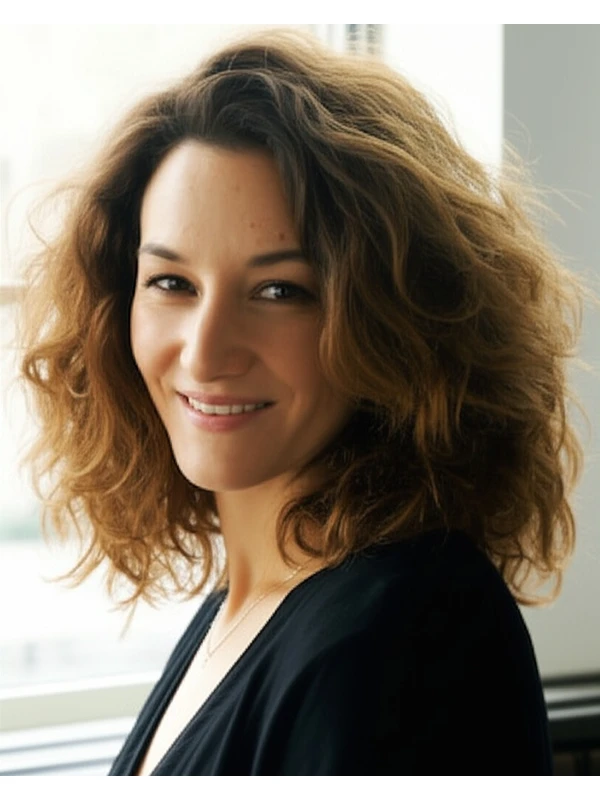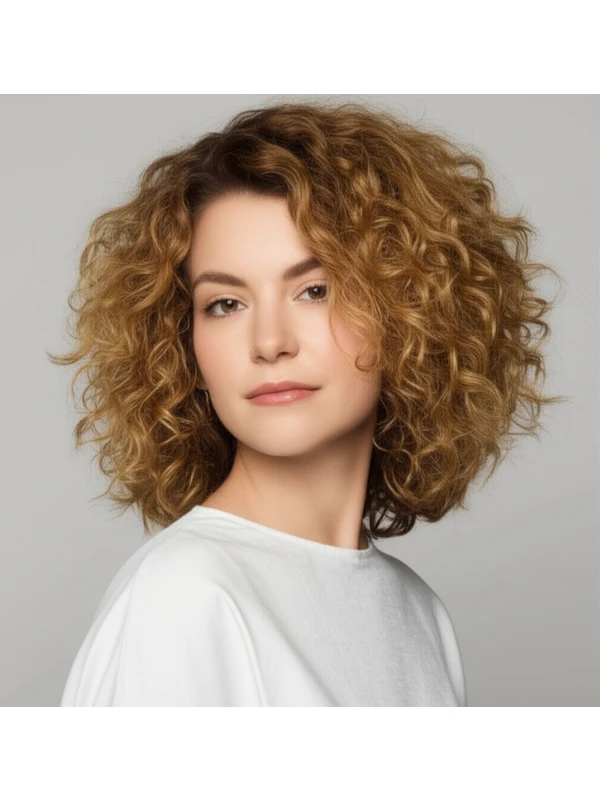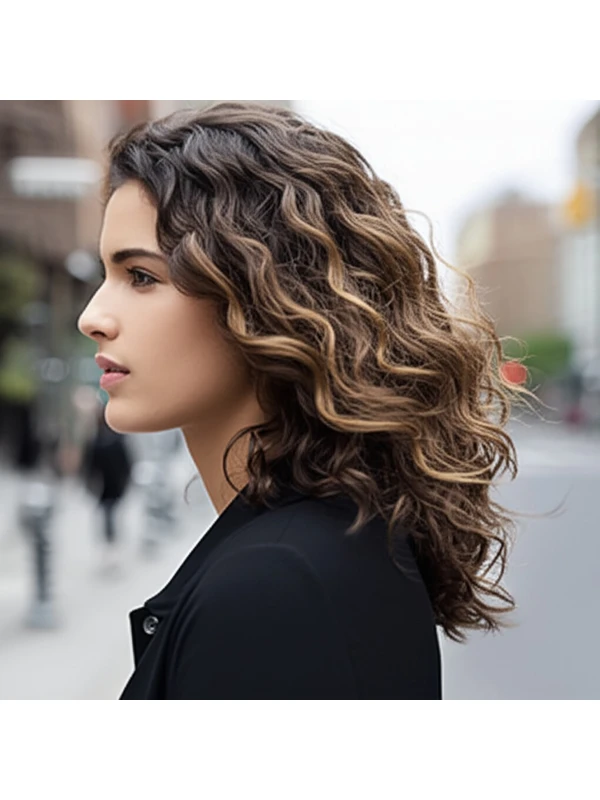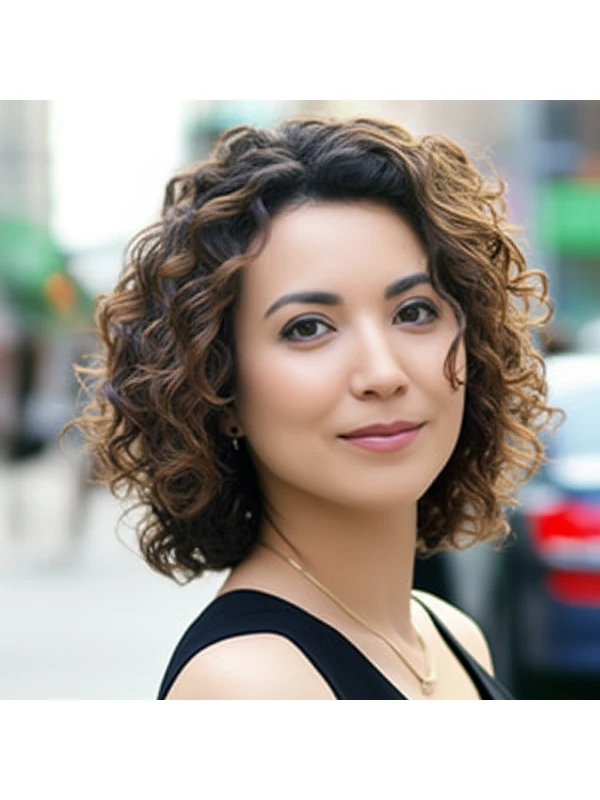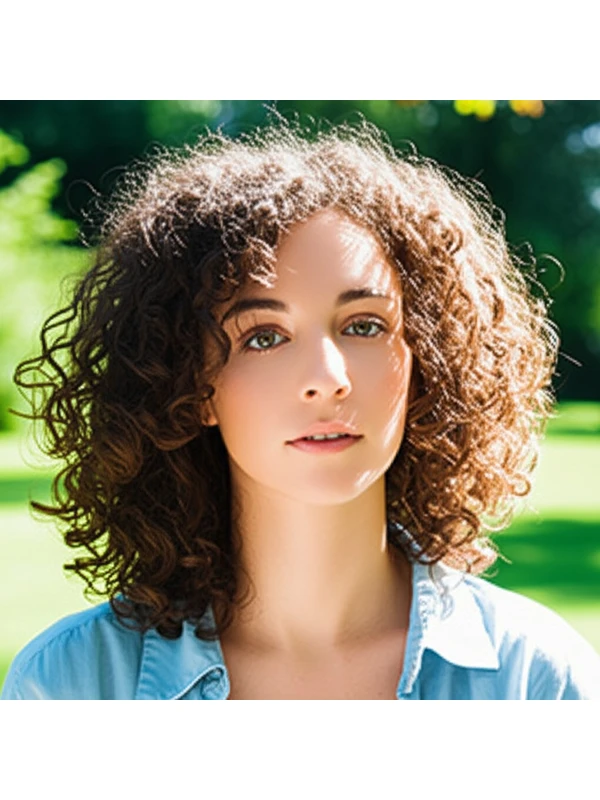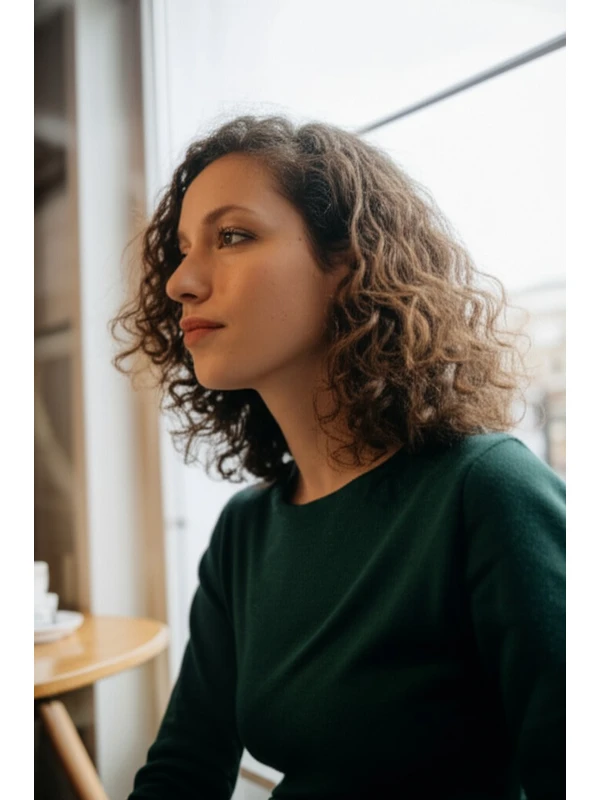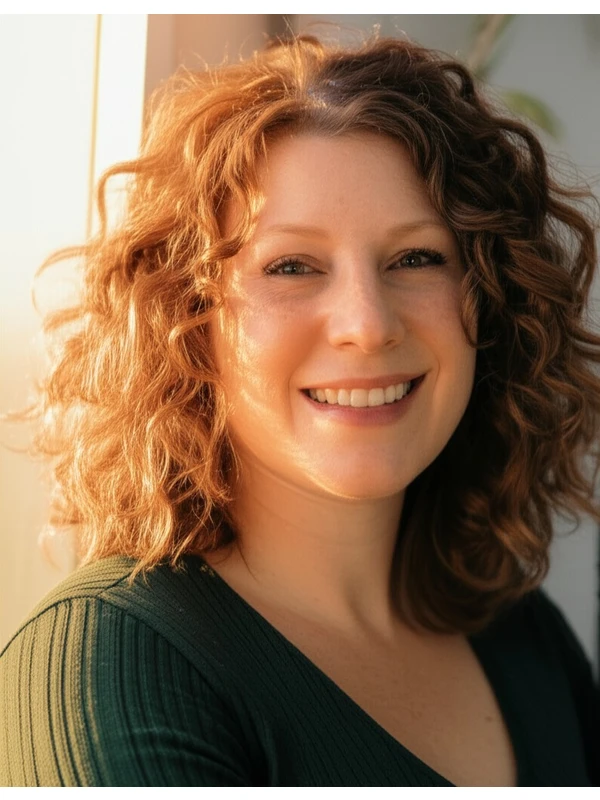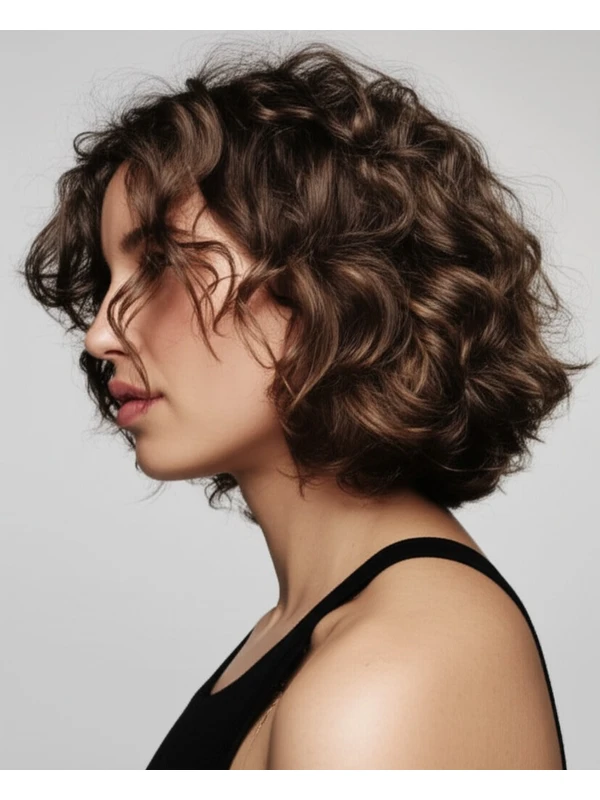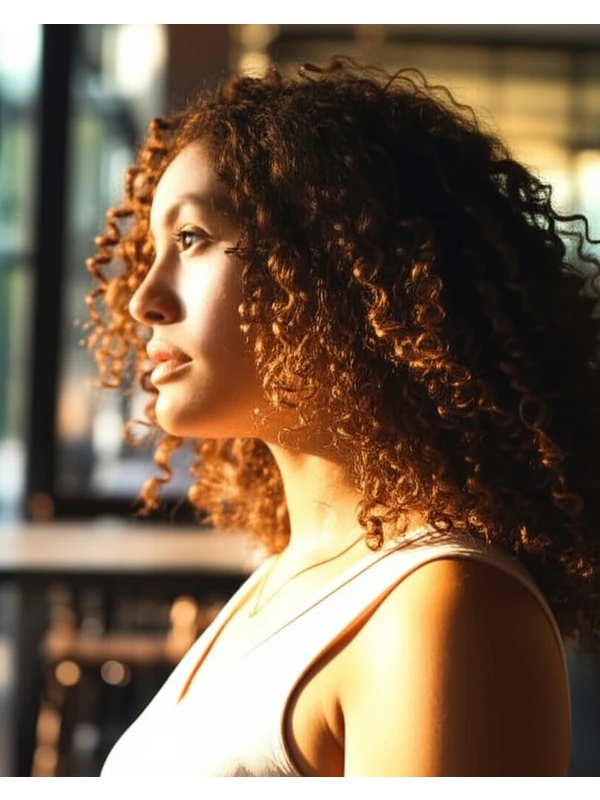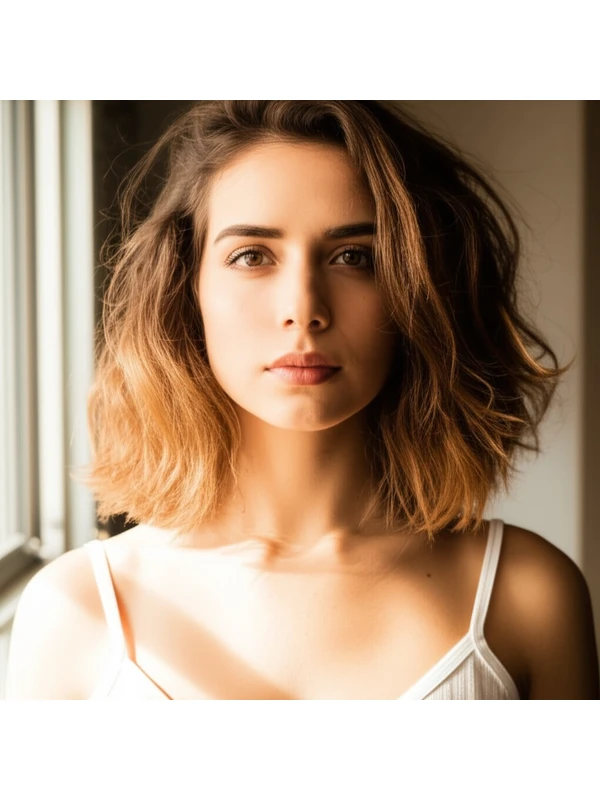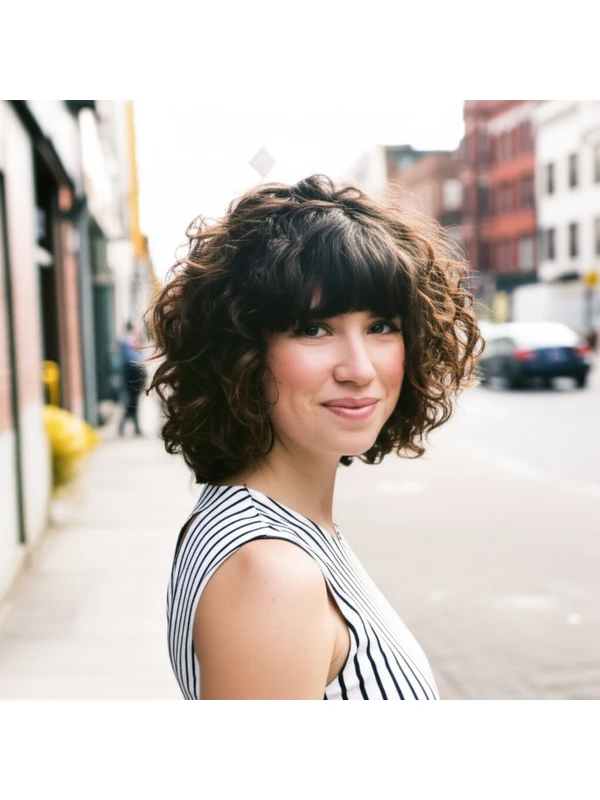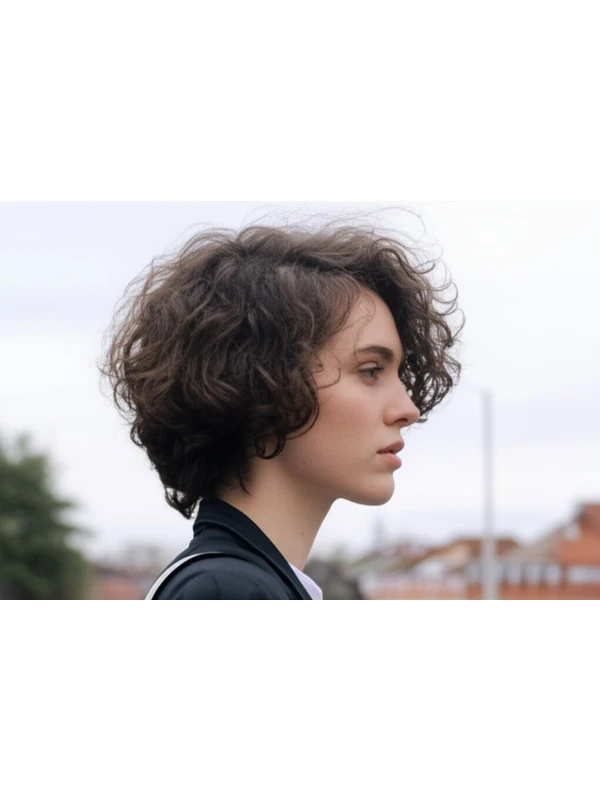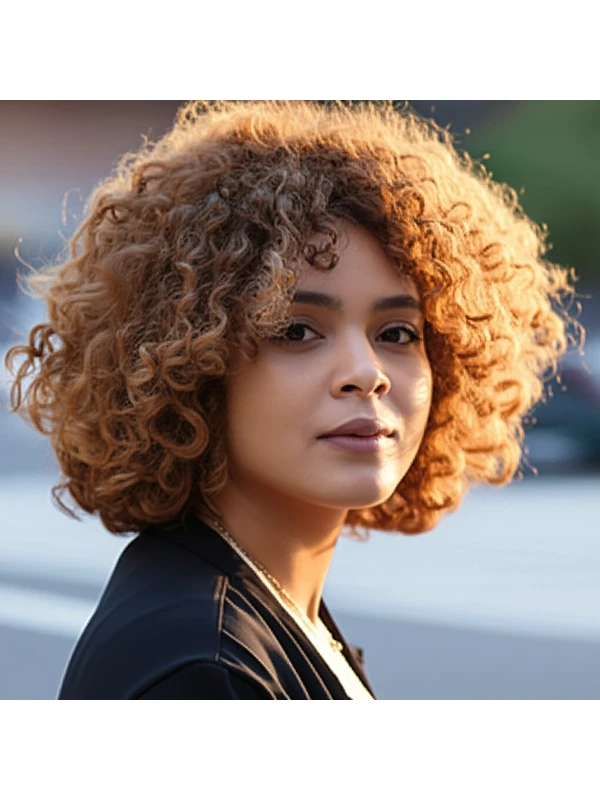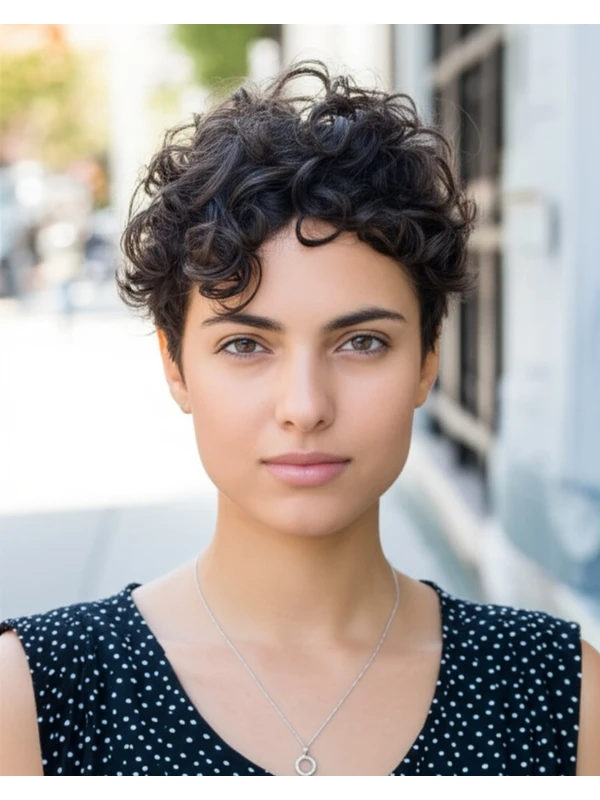#Curly Layers: A Guide to Bouncing Beauty
Curly layers are a universally flattering hairstyle that celebrates natural texture. This guide breaks down everything you need to know – from finding the perfect face shape fit, to styling variations and maintenance tips. Let's dive in!
#1) Background & Definition: What Are Curly Layers?
Curly layers aren’t just about chopping off length; it’s a strategic haircut designed to enhance your natural curl pattern. The geometry involves creating varying lengths throughout the hair, typically starting shorter around the face and gradually lengthening towards the back. This removes weight, encourages bounce, and adds dimension.
Key Features:
- Varying Lengths: Layers are cut at different levels to reduce bulk and highlight texture.
- Face-Framing Pieces: Shorter layers often frame the face, softening features and adding movement.
- Volume & Bounce: The layered effect lifts curls away from the head, creating volume.
Typical Length Ranges:
- Short Layers: Chin to collarbone length – emphasizes curl definition and creates a playful look.
- Medium Layers: Collarbone to shoulder length – offers versatility for styling and balance.
- Long Layers: Shoulder-length or longer – maintains overall length while adding movement and shape.
Alternative Names: Layered Curls, Textured Curly Cut, Dimensional Curly Haircut.
#2) Face Shape Fit: Finding Your Perfect Balance
The beauty of curly layers is their adaptability. However, certain layer placements flatter specific face shapes best.
- Oval: Lucky you! Almost any layered style works well with an oval face. Experiment with different lengths and fringe options.
- Fringe Options: Curtain bangs, wispy side-swept bangs, or even a blunt brow-grazing fringe can all be stunning.
- Round: Layers around the cheekbones and jawline help to elongate the face. Avoid very short layers that add width.
- Fringe Options: Long, angled bangs that sweep away from the center create length.
- Square: Soft, face-framing layers soften a strong jawline. Avoid blunt cuts or sharp angles.
- Fringe Options: A soft, piecey fringe can round out a square face.
- Heart: Layers that start around the chin area help to balance a wider forehead and pointed chin.
- Fringe Options: Side-swept bangs add softness and draw attention away from the forehead.
- Diamond: Layers that soften the angles of your cheekbones are key. A fringe can also help balance width.
- Fringe Options: Wispy, textured bangs or a long side bang work well to create symmetry.
- Oblong (Long): Layers add width and volume, making the face appear shorter. Avoid layers that fall straight down as they will elongate the face further.
- Fringe Options: A full fringe can help shorten an oblong face.
#3) Body Proportions & Height Guidance
Your overall body shape and height also influence how a layered cut looks:
- Petite (Under 5’4”): Shorter to medium layers work best, preventing the hair from overwhelming your frame.
- Average (5’4”-5'8"): Most layer lengths are flattering. Consider where you want to place volume – higher for added height, lower for a more grounded look.
- Tall (Over 5’8”): Longer layers help maintain balance and prevent the hair from looking too short or choppy.
- Narrow Shoulders: Layers that add width at the shoulders create visual balance. Consider face-framing layers with volume around the shoulder area.
- Broad Shoulders: Avoid overly voluminous layers directly on top of your head, as this can accentuate broadness. Focus on layering from the jawline down to draw attention away from the shoulders.
- Short Neck: Medium to long layers that fall below the chin elongate the neck visually.
#4) Works Best With Hair Types & Densities
Curly layers thrive with all hair types, but adjustments are needed:
- Straight/Wavy (2A-2C): Layers add movement and texture where it’s lacking. Be mindful of avoiding too many short layers that can create a choppy look.
- Curly (3A-3C): Layers enhance curl definition, reduce bulk, and promote bounce.
- Coily (4A-4C): Layers add shape and dimension to tightly coiled hair; however, careful placement is crucial to avoid creating unevenness or excessive shrinkage.
- Fine Hair: Shorter layers create the illusion of volume. Avoid too many long layers as they can weigh down fine curls.
- Medium Hair: Most layer lengths work well with medium density hair.
- Thick Hair: Layers are essential for removing bulk and creating shape in thick curly or coily hair. More layers will be needed to reduce weight effectively.
Shrinkage Factor: Curls and coils can shrink significantly after drying (sometimes up to 75%). Communicate your curl type and desired length with your stylist, ensuring they account for shrinkage when cutting.
#5) Styling Variations: From Casual to Evening Glam
- Sleek vs. Textured: Use a smoothing cream or oil for a sleeker look; embrace texturizing sprays or mousses for more defined curls.
- Middle vs. Side Part: A middle part creates symmetry and balance, while a side part adds softness and asymmetry.
- Fringe Variations: Curtain bangs, blunt bangs (for those who want to commit!), wispy layers, or no fringe at all – the possibilities are endless!
- Occasion Styling:
- Casual: Air-dry with a leave-in conditioner for effortless texture.
- Office: Define curls with a curl cream and smooth flyaways.
- Evening: Add shine with hair oil, or create an updo by pinning back layers.
#6) Maintenance: Keeping Your Layers Looking Fresh
- Trim Cadence: Every 6-8 weeks for most; potentially more frequently (4-6 weeks) if you have very short layers or coily hair experiencing significant shrinkage.
- At-Home Routine: Focus on moisture! Deep condition weekly.
- Heat vs. Air-Dry: Minimize heat styling to preserve curl health. When using heat, always use a protectant spray.
- Product Checklist:
- Moisturizing Shampoo & Conditioner
- Leave-in Conditioner (essential!)
- Curl Cream or Gel (depending on your curl type)
- Hair Oil (for shine and moisture)
- Estimated Daily Styling Time: 15-45 minutes, depending on complexity.
#7) Grow-Out Roadmap: Evolution Over Time
- Months 1-3: Layers are most defined; shape is noticeable.
- Months 3-6: Layers start to blend together as hair grows out. Regular trims maintain the overall shape and prevent a boxy look. Consider incorporating face framing layers if you haven’t already!
#8) Color Pairings: Enhancing Dimension
- Cool Undertones (Ash Blondes, Cool Browns): Deepen dimension with darker lowlights or subtle balayage.
- Warm Undertones (Golden Blondes, Warm Browns): Embrace warm-toned highlights to enhance the natural glow of your curls.
- Low-Commitment Options: Root smudging or face-framing highlights add dimension without a full color transformation.
#9) Season & Occasion Guide
- Spring/Summer: Lighter layers and brighter colors reflect the season's energy. Embrace air drying for effortless style.
- Fall/Winter: Deeper tones and more defined curls create warmth and coziness. Consider adding a protective oil to combat dryness.
- Work: Sleek, controlled styles that look polished.
- Weddings/Parties: Experiment with updos or add hair accessories for extra flair.
#10) Cost & Time
- Salon Time: Typically 1.5 - 3 hours, depending on complexity and stylist experience.
- Price Range: Expect to pay slightly more than a basic trim – generally in the mid-range salon price bracket.
#11) Pros & Cons
Pros:
- Adds volume and dimension.
- Enhances natural curl pattern.
- Versatile styling options.
- Flattering for most face shapes.
Cons:
- Requires more frequent trims than one-length cuts.
- Styling can take time, especially with complex curl patterns.
#12) Salon Consultation Script: Your Questions Answered
Use these prompts to guide your conversation with your stylist:
- "I'm interested in curly layers – could you show me some examples?"
- “What layer length would best suit my face shape and hair density?”
- “How can we account for shrinkage when cutting my curls/coils?”
- “Can we incorporate a fringe? If so, what style would be most flattering?”
- "I'm looking for low-maintenance styling – what products do you recommend?"
#FAQs
- Will layers make my hair look thinner? Not necessarily! Properly placed layers can actually create the illusion of volume by removing weight and encouraging curls to bounce.
- Can I get curly layers if my hair is very short? Yes, but shorter lengths require more precision in cutting and styling.
- How do I prevent my layered cut from looking choppy? Communicate clearly with your stylist about the desired level of texture and ensure they use point-cutting techniques for a softer effect.
- What if I don't like my layers after the haircut? It takes time to adjust! Try different styling products and techniques. If you’re still unhappy, schedule a consultation with your stylist to discuss adjustments.
- Do curly layers work on all curl types? Yes, but the approach and layer placement will vary depending on your curl pattern (wavy, curly, coily).
- Can I do this myself at home? While possible for experienced DIYers with a good understanding of hair cutting techniques, it's generally recommended to see a professional stylist who specializes in textured hair.
